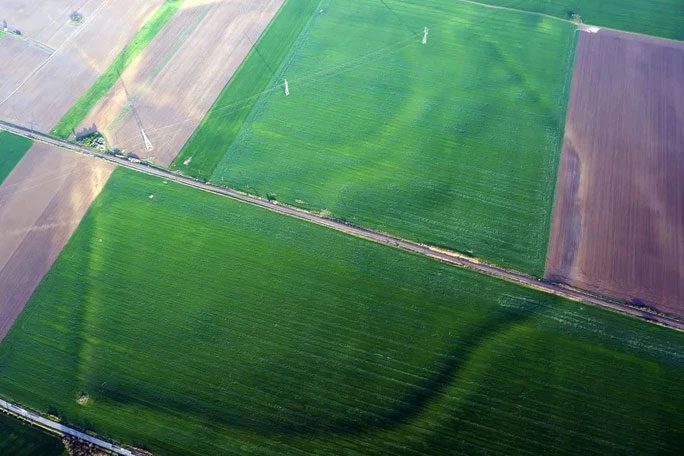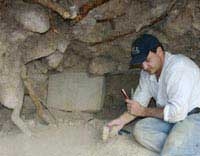By analyzing satellite imagery and aerial photos, scientists from Ireland, Serbia, and Slovenia have discovered over 100 previously unknown clusters of structures, shedding light on the mysteries of ancient Central Europe.
The satellite survey took place in the southern Carpathian Basin, an area where archaeologists believe many remnants of Iron Age cultures are hidden.
The research team, led by Associate Professor Barry Molloy from Dublin City University (Ireland), tracked down clues from the “phantoms” revealed by satellite imagery, conducted field surveys, and performed geophysical explorations, confirming that these are indeed more than 100 ancient archaeological sites.

An ancient structure cluster emerges hazily among the fields – (Photo: DUBLIN CITY UNIVERSITY).
According to Heritage Daily, most of the sites were built between 1600 and 1450 BC and nearly all collapsed around 1200 BC, becoming largely abandoned.
These sites include enclosure structures, which served as primitive defense systems and could be precursors to the defensive models later adopted by famous European fortresses.
In other words, these “phantoms” also illustrate how the construction techniques of ancient Central Europeans gradually evolved over different periods.
Some of the larger sites related to this network had been known previously, as large-scale primitive fortresses. Together, they indicate a part of an entire network of smaller communities that coexisted and depended on one another.
In a publication in the scientific journal PLOS One, the communities in this region, located along the Tisza River, are collectively referred to as the Tisza Site Group (TSG), with each community situated about 5 km apart, forming a cooperative network.
The TSG played a crucial role as a center of innovation in prehistoric Europe, marking a turning point in the development of ancient social systems in the region.
During the decline of the TSG—around 1200 BC—their military techniques and complex earthmoving technologies became widespread across Europe, accompanied by the diffusion of culture.
The vast dataset hidden within the “phantoms”, now buried beneath the fertile fields of the Carpathian Basin, will serve as a foundation for a series of further studies on civilizations and technological advancements in ancient Europe.





















































